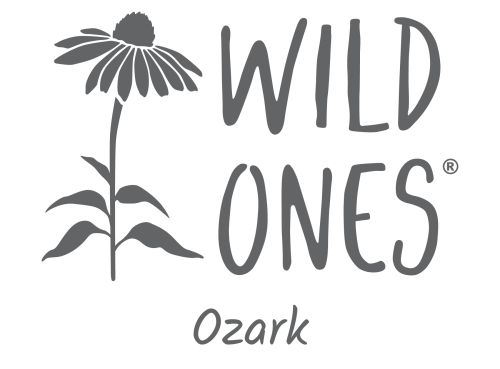By Danny Barron.
Earlier this past week, I went outside and thought hail had damaged my skullcaps because they had a lot of holes in them. Then the next day, there was a very tight webbing on the upper sides of the leaves. That made it obvious that an insect was feeding on them (or rather a whole wave of insects – it’s a big clump, quite possibly a hundred stems and most were affected at once).
The first impulse is to run for some sort of insecticide. That’s what our gardening history has taught us, Right? BUT, that would be wrong on many levels.
1) It would kill the food chain. It would kill the insect eating the skullcap, kill incidental caterpillars (other than the targeted ones), possibly kill many beneficial insects, and possibly kill upper line predators (bats, birds, frogs, toads, snakes, etc).
2) What the heck are we growing native plants for if we don’t want to support the native ecosystem?
3) The plants aren’t usually in any real danger (or even much distress). When herbivorous insects appear, there’s almost certainly going to be an incipient appearance of a predator that would like to eat them. Aside from that, plants have their own responses and they have evolved with native insects for at least many thousands of years. Many plant defenses are chemical in nature, some are biological, and a few are even predatory themselves.
In one case, in April, I found my lanceleafed coreopsis (Coreopsis lanceolata) completely skeletonized, looking like transparent toilet paper. I think it was the larvae of the emerald moth. They’d finish one plant and move to an adjacent one…and truthfully the plants looked almost dead. However, a couple weeks later, new growth was flushing out and even flower buds were reappearing. Net effect, the coreopsis affected were a bit shorter and later flowering, with possibly fewer flowers. No big deal, but certainly alarming as you watch 1,2,3…8 coreopsis plants eaten in sequence, going down the row. However, the moth is very lovely with muted silvery green and a darker green central band.
If you look at the photos below, you can see where insects have caused what looks like grave damage. However, I took the photos a couple of days AFTER the damage appeared, and the plants are already sending out new growth, which is unblemished.
It’s all right, don’t panic!

The skullcaps (Scuttelaria integrifolia) only a few days after initial damage. Either the lepidopterans (moths, butterflies) have matured and moved on (actually I think that’s the case, given the webbing) or native predators have thinned or eliminated them. The plant will continue growth and flower happily soon.

Texas Thistle (Cirsium texanum) about a week and a half after insects put many pinholes in leaves. They were active (cooler temps) for a week, maybe week and a half, then the plant began putting out new growth. There’s still a bit of damage (inconsequential) on some newer growth, but much less than earlier. The plant will continue to grow and will flower later in the summer.
